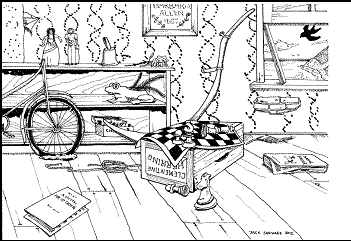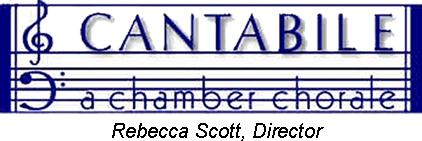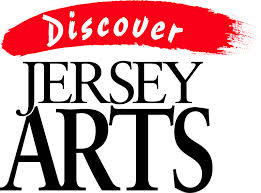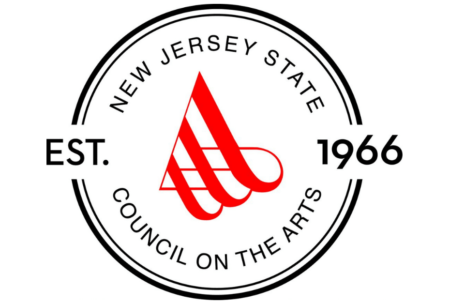Grant funding has been provided by the Middlesex County Board of County Commissioners through a grant award from the Middlesex County Cultural and Arts Trust Fund.
Program Notes: Fancy Free
FANCY FREE
Ballads, Mouth Music & More
 Hymn to St. Cecelia
Hymn to St. Cecelia
The words read by Kathleen Appleby are by the wife of Ralph Vaughan Williams, Ursula Vaughan Williams. English composer Herbert Howells studied with Charles Villiers Stanford and Charles Wood at the Royal College of Music where he himself taught for sixty years! He was influenced, along with Vaughan Williams, by music of the 16th century and English folk music. Howell loved cathedral architecture and composed most of his church music for specific buildings. Imagine the sonorities of this piece, in the grandeur of an English cathedral.
Dr. Gwyneth Walker (b. 1947) is a graduate of Brown University and the Hartt School of Music. Walker’s catalog includes more than 130 commissioned works for orchestra, band, chorus and chamber ensembles. We have chosen some of her lighter works for this program of Fancy Free music. Dr. Walker reinterprets many of American’s favorite tunes with such a compositional flare, that they cannot be called “arrangements” but are instead tunes that have been re-composed. She is especially kind to the human voice and offer opportunities to use it expressively in all ranges, timbres and dynamics.
Summary by the Pawns – This one movement from the choral cycle
An Hour to Dance with poems by Virginia Adair, is a light one in a more serious and heavier cycle. It may help to understand it, if you play chess!
“In chess, the ancient game of stylized combat, the pawns are the foot soldiers; this is a synopsis of life from their humble perspective. Shielding the more mobile knights, bishops and castles and the supreme powers, the kings and queens, pawns advance only one square at a time (except from the starting line, when they may forge ahead two), capture on the diagonal and, should they survive to the opposite end of the board, can become queens. They are also most likely to be captured.” (notes by Rick Snyder)
Pavane, Opus 50
Pavane, Opus 50 by Gabriel Fauré was composed in 1887 for a summer orchestra concert. The text by Robert de Montesquiou, cousin of the Countess Greffulhe, to whom Faure dedicated the piece, has no relation to music. So naturally, the piece became popular without the chorus and is usually heard on orchestra concerts today. The nostalgia created by the melody, which is developed only by repetition, is not matched by the superficial words.
A setting of two poems of Emily Dickinson’s, Feathers and Frogs, includes a direction by the composer that the poems be read before being sung. We have found this to be an agreeable procedure for the spoken poem is straight forward to the ears, whereas the sung poem shows the influence of the poetry on the composer! “Hope” moves energetically and continually forward as hope should- just like a bird. You will hear the bird in the upper octaves of the piano part! On the other hand, you will hear the frog in the bog in “I’m nobody”. How dreary to be “somebody!”
Notes by the composer: “American Ballads, first performed Nov. 21, 1992 are dramatized and semi-staged presentations of familiar American folksongs. These tunes, favorites from my childhood, are rich in color, personality and humor. They beckon for the stage! Thus, in my arrangements for chorus and flute, I have endeavored to create musical-theatrical portrait of these delightful ballads.”
Come all ye fair and Tender Ladies for 6 part chorus of mixed voices and flute is a sad tale of unrequited love. Listen for the swallow!
“Clementine is a dramatic presentation of the familiar American folksong. This arrangement depicts various colorful aspects of the Clementine story, such as the blowing of bubbles (illustrated with falsetto “ooos” sung by the Tenors) and Clementine’s ghost wandering off into the concert hall. The intent is to enjoy the humor and character of this well-known ballad.” (note by the composer)
Two Celtic Songs for Men’s Voices:
The Star of County Down is an Irish folk tune from the County Down in Northern Ireland arranged here for four men’s voices by the Canadian composer Donald Patriquin.
Mouth Music, as sung by Dolores Keane and John Faulkner, famous Irish musicians, is a tune from the Hebrides in Scotland. Celtic mouth music, is sometimes called lilting, diddling or port-a-beul (“tunes from the mouth”). It comes from the folk music traditions of the Celts and the Gaels. Sung during weddings, dances, chore times, or just for sport, mouth music combines astonishing verbal acrobatics with direct, heartfelt harmonies to create an irresistible musical experience. From its inception, Celtic mouth music was a music meant to fill the gaps created by poverty, religious oppression, and /or a lack of good instrumentalists, but mostly the latter. It’s vocal music meant for dancing in which the singers imitate the music of fiddles, bagpipes, and jews harps, delighting in lyrics that are often bawdy, and always bold and full of the word – wizardry that creates their complex rhythms. (notes by Keane & Faulkner)
The Rose, the Briar and the Bicycle……………… Gwyneth Walker (2002)
The Rose, the Briar and the Bicycle are contemporary adaptations of familiar ballads and love songs. The intent is to expand upon the originals, especially with the addition of the oboe, a primary agent for color and character n each song.
The first song, The Rose and the Briar, is based on the ballad “Barbara Allen.” The oboe introduction presents a filigree pattern that runs throughout the song. With each verse, the filigree is varied to reflect the images in the lyrics: the buds of May, the dying Sweet William, Barbara’s indifferent (and dancing), hardhearted Barbara Allen, and her eventual lamentation. During the final verse, the oboe initiates a dissonant chromatic line that intertwines with the chorus and then rises above, as a briar.
An Interlude follows to connect the first song to the second. The tempo for the new song is set by the pianist tapping the piano lid at a “trotting tempo, as a fox setting out in search of food.” For indeed, Dinner for the Family is based on the ballad, “The Fox.” Again, the oboe provides commentary on the lyrics: the scurrying fox, the awakened farmer, the sound of the horn “both loud and shrill,” the quaking duck, and the fox running back to her den. Throughout this song, the energy of the fox’s adventures characterized the oboe part.
The frantic pace of the fox chase ends with a second Interlude, marked “at a graceful tempo.” The focus of the music now shifts to a bicycle. Perhaps a bicycle bell may be heard in the trills played by the oboe. A waltz rhythm is established for “A Two- Seater,’ based on the 1890’s song, A Bicycle Built for Two. The floral style for this song is often 4-part men or 4-part women’s harmony, in a “barbershop quartet” idiom reminiscent of 1890’s. The oboe offers quiet, background arpeggio patterns at fist. As the song professes, these arpeggios become more abundant and rapid. Near the end of the song, the arpeggios flow up, down and around the chordal pitches in large phrases suggesting the spinning of bicycle wheels. The ringing of the bicycle bell brings this song of courtship to a close. (notes by the composer)
The Road to Freedom is based on the traditional song “Follow the Drinking Gourd.” Dating back to the time of the Underground Railroad, this African-American song provided a map to the runaway slaves. By heading toward the Big Dipper (the “Drinking Gourd”), the fugitives would head north toward Canada and freedom. The intent of the new choral setting is to highlight some of the characteristics of the original song. The theme of walking is reflected in the tempo marking “at a stead tempo, as if walking on a long journey.” The piano accompaniment is often very regular, in the spirit of even-paced walking. Occasional staccato chords may be heard as light footsteps. The chorus portrays the Northern journey most prominently during the refrains. Footsteps, joyful hand-claps and “shooting stars” appear. The travelers are heading north, keeping their eyes on the sky.. Near the end of the song, new verses are added to express their excitement.
***


